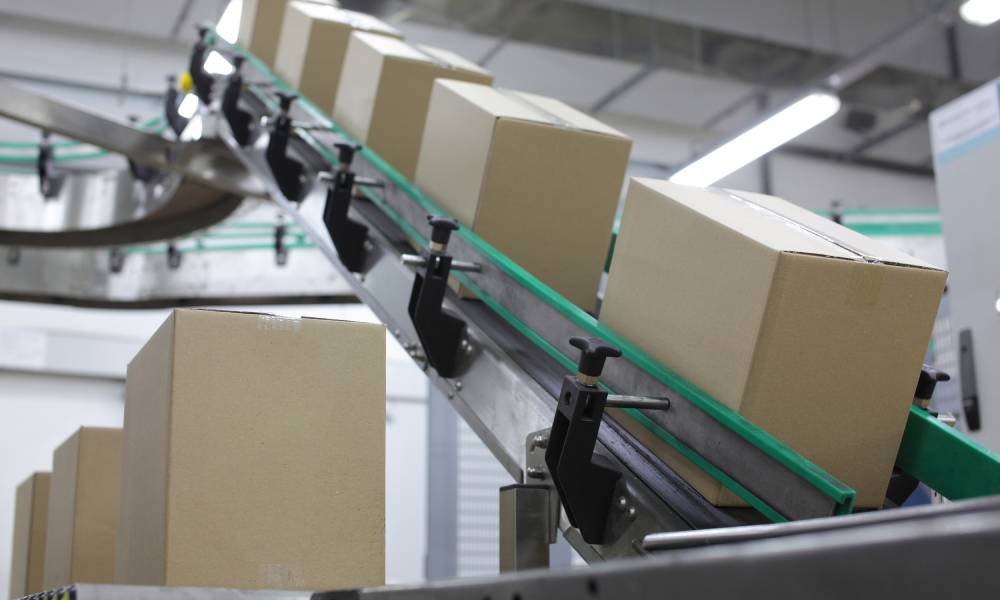

Operating a conveyor belt system efficiently is critical for maintaining productivity and avoiding costly disruptions. Overloading the system can lead to frequent breakdowns, increased wear and tear, and even complete system failure.
Let’s look at how to avoid overloading your conveyor belt system and keep it running smoothly. Whether you’re dealing with a new installation or an existing one, these tips will help you optimize your system’s performance and prevent overloading.
Every conveyor belt system has specific limits in terms of weight capacity, speed, and the type of material it can handle. Before using the system, make sure that you understand its capabilities and limitations thoroughly. This information should be readily available from the manufacturer or supplier.
Additionally, you should conduct regular maintenance checks to ensure the system is still functioning within its limits. Any changes in production processes or materials being transported should also be taken into consideration when evaluating the system’s capacity.
Using the correct size of belts and pulleys is crucial in preventing overloading. A belt that is too narrow or a pulley that is too small can cause excessive tension in the system, leading to premature failure. On the other hand, a belt that is too wide or a pulley that is too large can result in slippage, causing inefficiency and potential damage.
It’s important to consult experts when selecting belts and pulleys for your conveyor system. They can help determine the ideal sizes based on your specific needs and ensure proper installation.
Effective load management strategies involve distributing weight evenly across the entire length of the conveyor belt. This can be achieved by using dividers or guides to keep items in place and prevent them from accumulating in one area. Additionally, implementing an indexing system that controls the release of products onto the conveyor belt can help regulate weight distribution.
Another strategy is to adjust the speed of the conveyor belt based on the weight being transported. This can be done manually or through automated systems that use sensors to detect weight and adjust speed accordingly.
Properly trained employees are key in preventing overloading incidents. Employees should understand the system’s limitations and how to properly load it without exceeding capacity. Regular training sessions should also be conducted to reinforce safety protocols and ensure all employees are aware of any changes or updates to the system. Whether you’re training them on how to clean conveyor belts properly or how to identify warning signs of overloading, investing in proper employee training can save you time and money in the long run.
Regularly monitoring and analyzing performance data can provide valuable insights into your conveyor belt system’s efficiency. This includes tracking load capacity, speed, downtime, and maintenance records. By keeping a close eye on these metrics, you can identify any potential issues before they become bigger problems.
Additionally, this data can help you make informed decisions about improvements or upgrades to further optimize your system’s performance and prevent overloading.
Preventing overloading in your conveyor belt system requires a combination of proper knowledge, equipment sizing, load management strategies, employee training, and performance monitoring. By implementing these measures, you can ensure that your system runs smoothly and efficiently, minimizing downtime and maximizing productivity. It is important to regularly assess your system, stay up to date with its capabilities, and train employees to prevent potential overloading incidents.
The surface of any playground must meet standards for enjoyment and safety, and choosing the…
The chance to go to Pearl Harbor offers a truly immersive experience that everyone should…
Ensure safety and efficiency with a well-maintained tanker trailer pressure management system. Invest in quality…
Learn the best methods for soil sampling, from grid and zone sampling to accurate sampling…
If your truck isn’t as comfortable as it should be, you’re likely leaving the road…
When disaster strikes a business—whether it's a flood, fire, or storm—the path to recovery can…